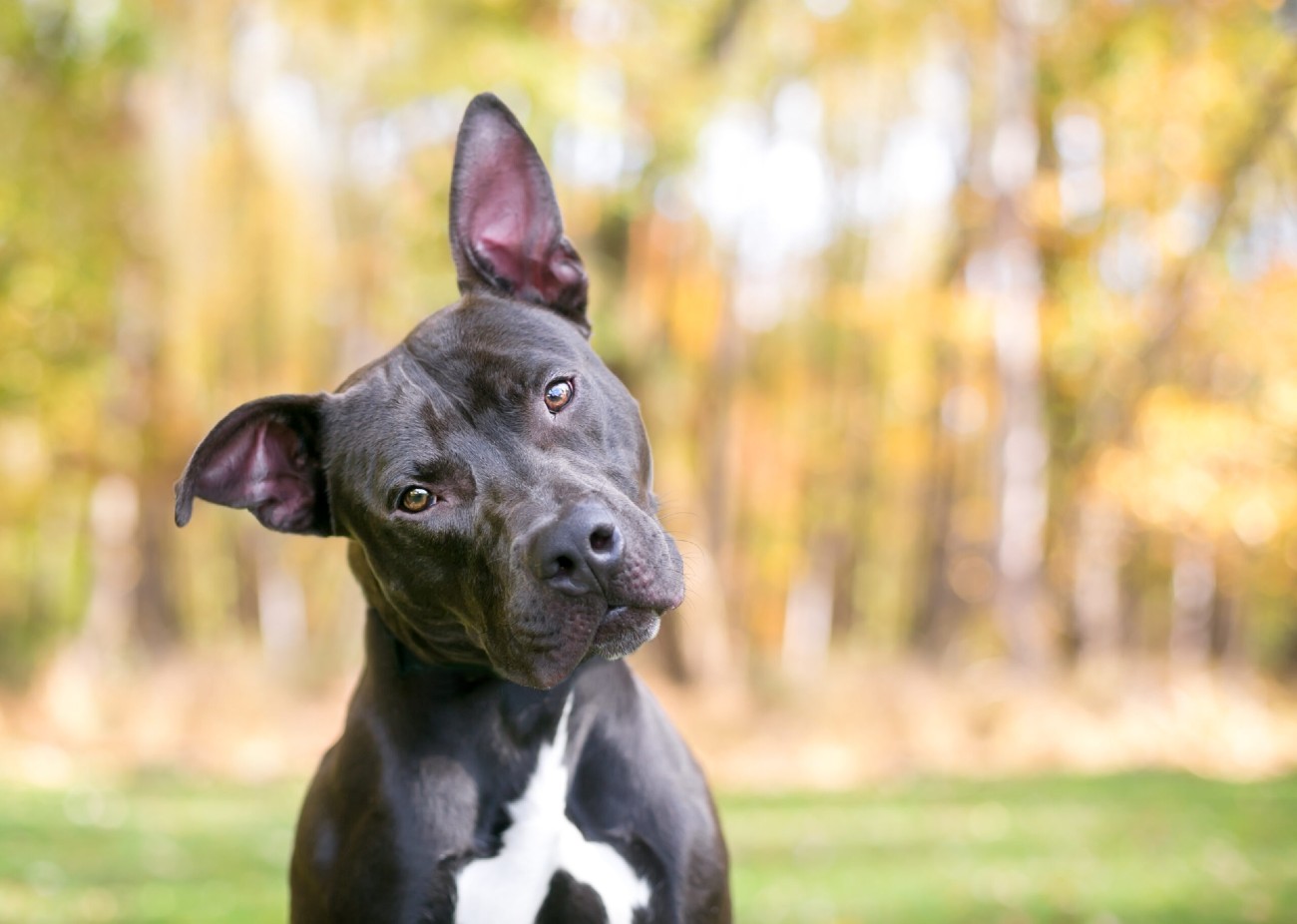Nobody is saying it, but the root of 98% of dogs with bad breath and tartar buildup is diet.
Yes, a dental routine is absolutely necessary (read on for all the pro tips!). But since your dog’s diet is actually the root cause of the tartar buildup, you’ll be fighting a losing battle no matter how many quick fixes you try if the diet remains an issue.
This matters a lot because tartar is a serious problem for your dog’s health. If it isn’t removed, especially on the upper gum line, the gums become inflamed and irritated — also known as gingivitis. When this happens, bacteria can sneak into the bloodstream, which taxes the immune system and can negatively impact the entire body.
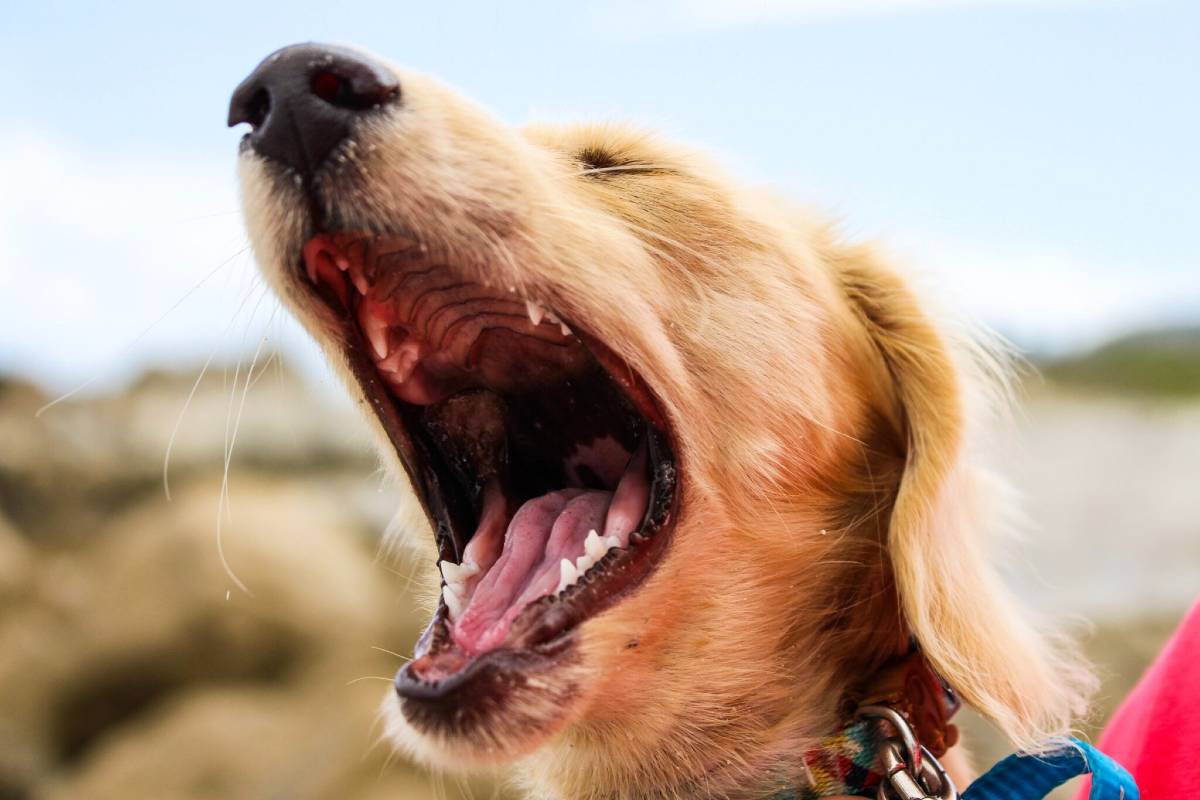
So it’s crucial that you tackle that tartar. The most effective approach is two faceted:
- Your first goal should be to address the existing tartar buildup with an immediate solution.
2. But the BIG goal should be more focused on the long game: stopping that tartar from building up in the first place. And this is the real key: it all goes back to diet.
Buckle up — we’re about to cover it all! We’ll start with the need for an immediate dental routine. Then, we’ll dig deeper into the real key to oral health — what you’re putting in your dog’s bowl.
On The Agenda
The Immediate Goal: Tackle Existing Tartar
Brushing and teeth cleanings are extremely stressful for dogs (and their humans!). Not to mention, teeth cleanings are costly and require anesthesia — and anesthesia should be avoided whenever possible because of the toll it takes on the body.
Instead, start this easy (and far less stressful) dental routine:
1. Check your dog’s teeth.
It’s always a good idea to peek inside your dog’s mouth from time to time — though, of course, be patient and don’t stress out your pup!
As you get into your new and improved dental routine, you’ll start to see less tartar (especially at the gumline) and inflammation. It’s great to track your progress!

2. Choose the right bones.
Here’s what works: raw meaty bones.
Chicken necks and turkey necks work particularly well. Your dog sinks his teeth into the bones of the neck so his teeth are completely surrounded. When he releases and pulls his teeth out, the neck bones scrape off some of that tartar.
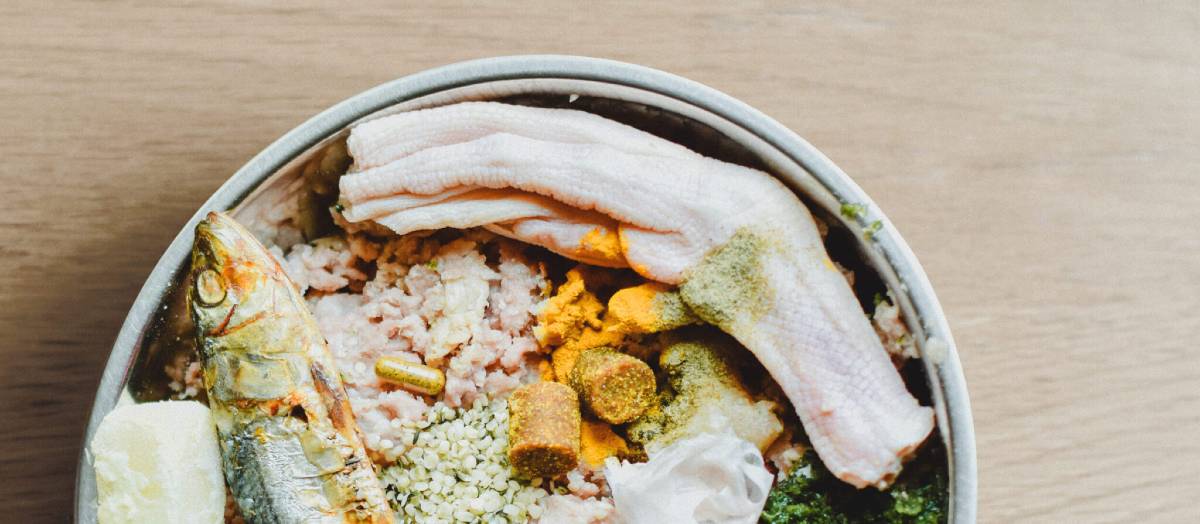
Raw, meaty bones work best when paired with an active ingredient like sea algae that’s able to soften the tartar first (more on this in just a minute).
As for what doesn’t work? Well, many mechanical chews are too hard, which can end up damaging your dog’s teeth. Plus, they really aren’t able to access the tartar where it matters most at the gumline — your dog just gnaws on the hard surface rather than sinking his teeth into it. Many are also full of carbohydrates, which is a MAJOR culprit in tartar buildup (we’ll get into this big time in the next section).
Then there are rawhides and softer dental chews, promising pearly white teeth and better breath. But many of these come with a whole host of concerns — like choking, cheap ingredients that cause stomach upset, and indigestible pieces that can cause fatal blockages in the digestive system. So steer clear!
3. Incorporate a sea algae dental stick right before bed.
The secret to an easy and successful dental routine: sea algae.
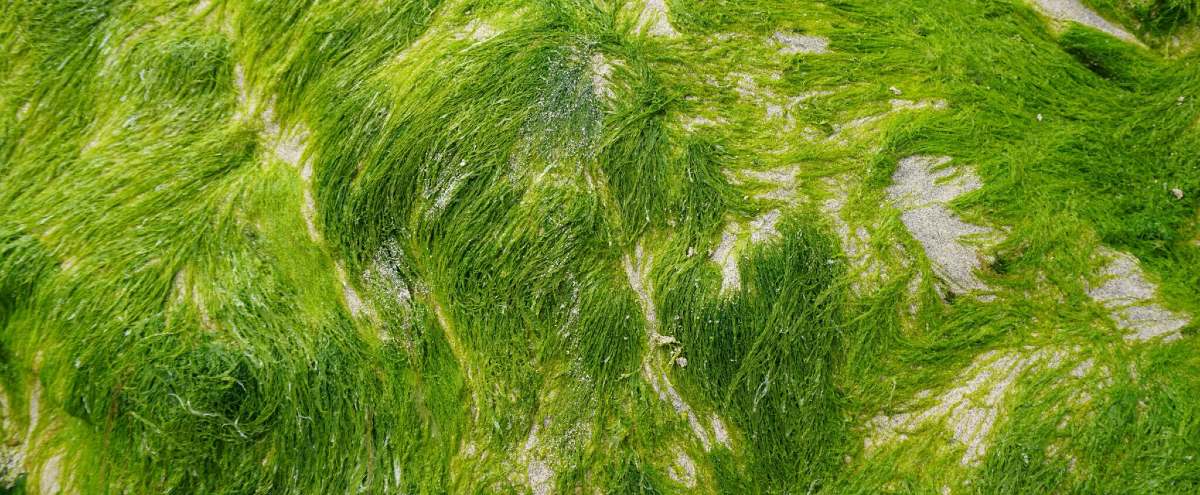
Because sea plants like algae accumulate slimy biofilm, they have a natural protective mechanism to cut through the biofilm and break it down. Tartar on your dog’s teeth is essentially just layers of biofilm, so the algae can combat the tartar by breaking it down in a similar way. This is the safest, easiest, and most effective way to address existing tartar build-up and bad breath.
Give your pup a sea algae dental stick every night after dinner and let the algae go to work!
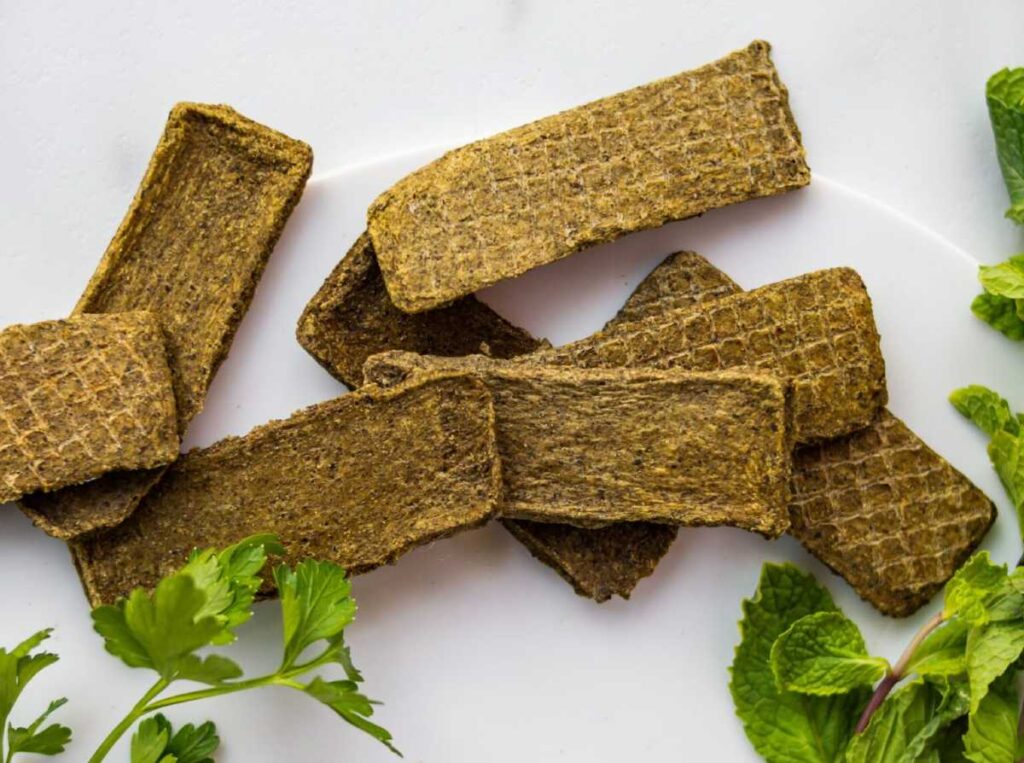
The next day, when your dog chews on a bone (that beloved chicken neck!), even more tartar will scrape off since it’s been loosened up and softened by the algae.
All that being said, sea algae dental sticks don’t address the cause of tartar buildup. Yes, it’s crucial to have a daily dental routine (imagine if YOU didn’t brush your teeth for 20 years!). And this particular routine with sea algae dental sticks does help prevent tartar buildup. But you can do even MORE to address the root cause of excessive tartar…
The Long-Term Goal: Stop Tartar In The First Place
We’ve said it once, and we’ll say it a million times: health starts with what’s in the bowl.
Oral health is no exception.
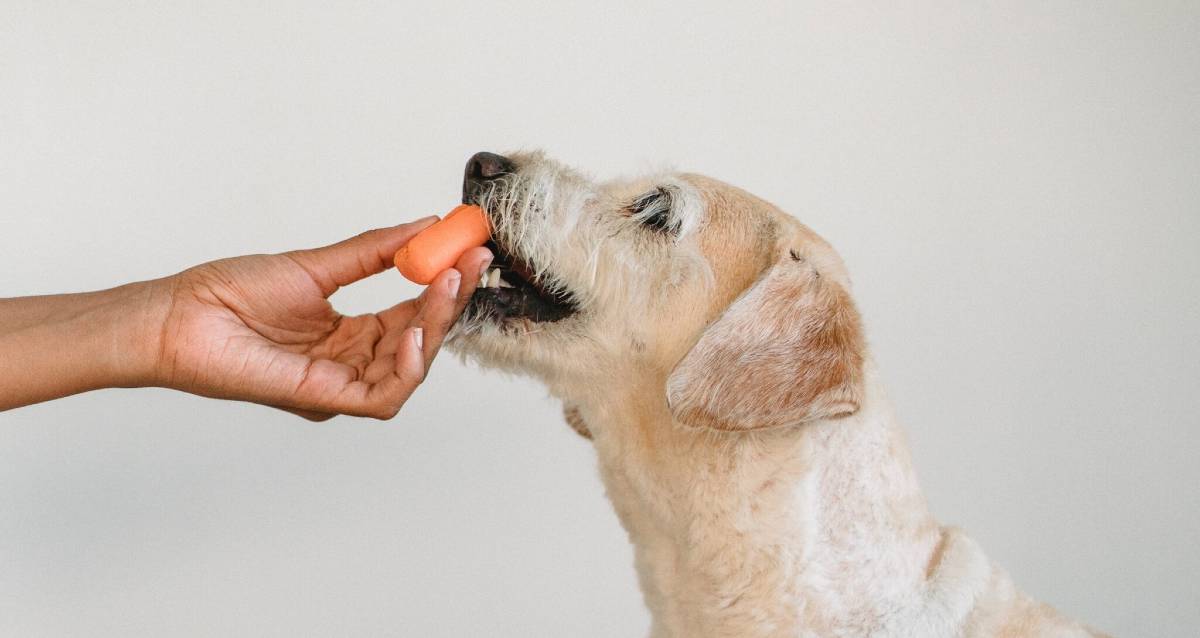
The REAL cause of most dental issues is diet. This also means that a proper diet can promote a healthy mouth!
Most pet parents feed kibble. And while kibble is convenient and affordable, it presents all sorts of health problems for your dog.
And contrary to popular belief, kibble does NOT clean teeth.
In fact, the ingredients in kibble create more tartar build-up. Kibble is often high in carbohydrates (upwards of 40% of the recipe). Dogs aren’t designed for diets with this many carbohydrates. For one, they have minimal amounts of salivary amylase (an enzyme in saliva that breaks down ingested sugars or carbohydrates), so those high carbs are not being broken down as they would in an omnivore.
As scavenger carnivores, a species-inappropriate diet like high carbohydrate kibble can lead to chronic inflammation, which can then lead to diseases like pancreatitis and cancer.
So tartar buildup is just one of the many ways high levels of carbohydrates can cause problems for your dog.
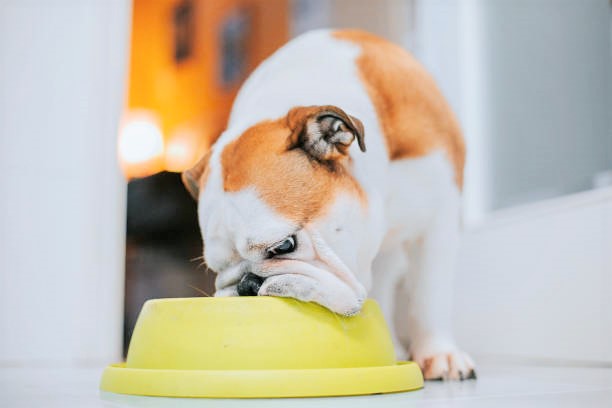
Excess carbohydrates and sugar → more tartar.
More tartar → more bad bacteria, and bad breath.
PLUS, the carbohydrates feed bacteria in the mouth that can nestle below the gumline (ew).
Since many kibble brands are high in carbohydrates, kibble-feeders should take a closer look at the package. You want to shoot for the lowest percentage of carbohydrates possible — ideally 25% or less. (Because remember, carbohydrates are the culprit for tartar buildup).
Get ready for some math (but just a little, so don’t panic).
Take a look at the guaranteed analysis. If it doesn’t list the amount of carbohydrates, you can use the following formula to figure it out! Start with 100 and subtract the percentages of what is listed.
100%
– x % of protein
– x % of fat
– x % of moisture
– x % of ash (if it isn’t listed, use 6% to 8%)
=
________ CONTAINS ___% of carbs
| Guaranteed Analysis | |
|---|---|
| CRUDE PROTEIN | 26.0% min |
| CRUDE FAT | 16.0% min |
| CRUDE FIBER | 4.0% min |
| MOISTURE | 12.0% max |
| LINOLEIC ACID | 1.5% min |
| CALCIUM | 1.0% min |
| PHOSPHORUS | 0.8% min |
| SELENIUM | 0.35 mg/kg min |
What Should Be In The Bowl
So what should be in your dog’s bowl instead of all those carbohydrates?
Dogs are scavenger carnivores, which means they are designed to eat mostly meat. If you peer into your dog’s mouth, you’ll see that her teeth are tightly interdigitated — which means they are primarily designed for heavy-duty chewing (FYI, those teeth are NOT designed to just crunch little overly-processed balls — ahem, kibble).
A species-appropriate diet for your dog is a diet high in animal proteins like skeletal and organ meats (70-80%).
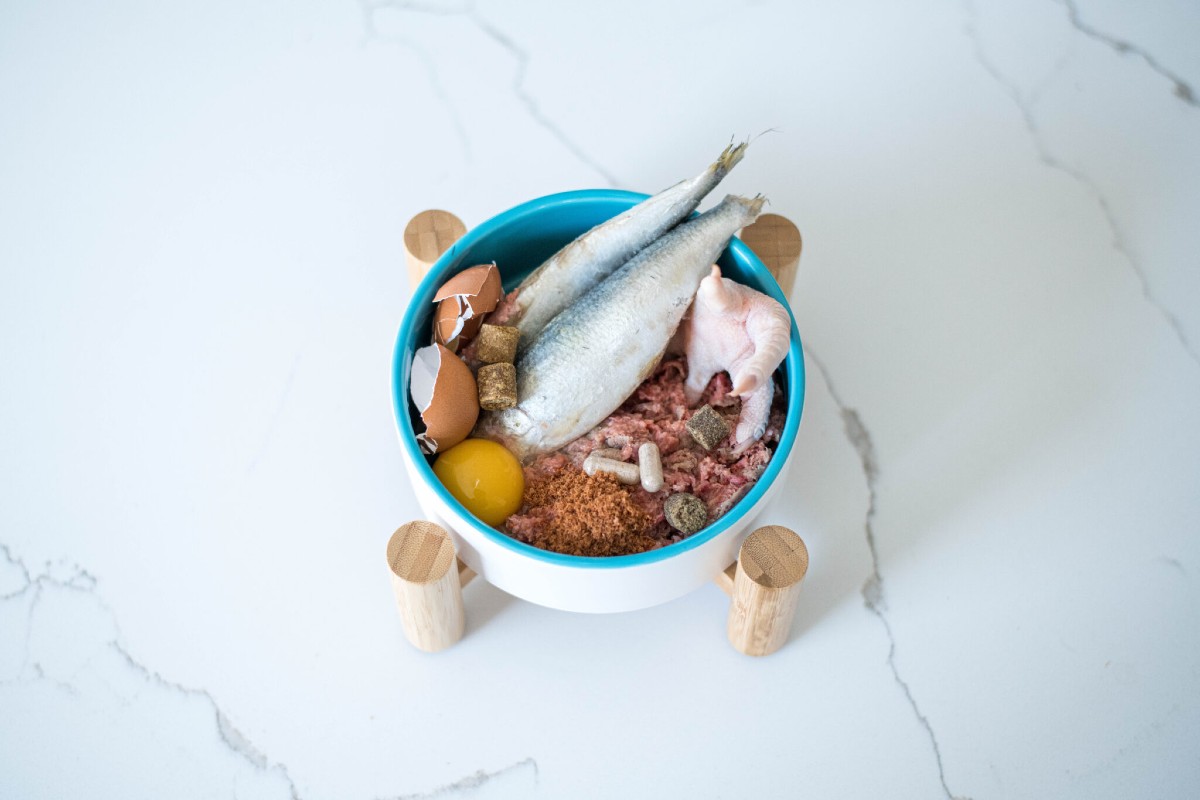
Consider switching to a raw, whole food diet or a ketogenic freeze-dried diet. (Learn more about what your dog should be eating with “What Makes A Carnivore?”). When you feed a diet rich in real, whole meat, your dog’s teeth will be able to chomp exactly what they were designed to chomp. Plus, when you feed low levels of carbohydrates, there won’t be as much tartar buildup and bacteria.
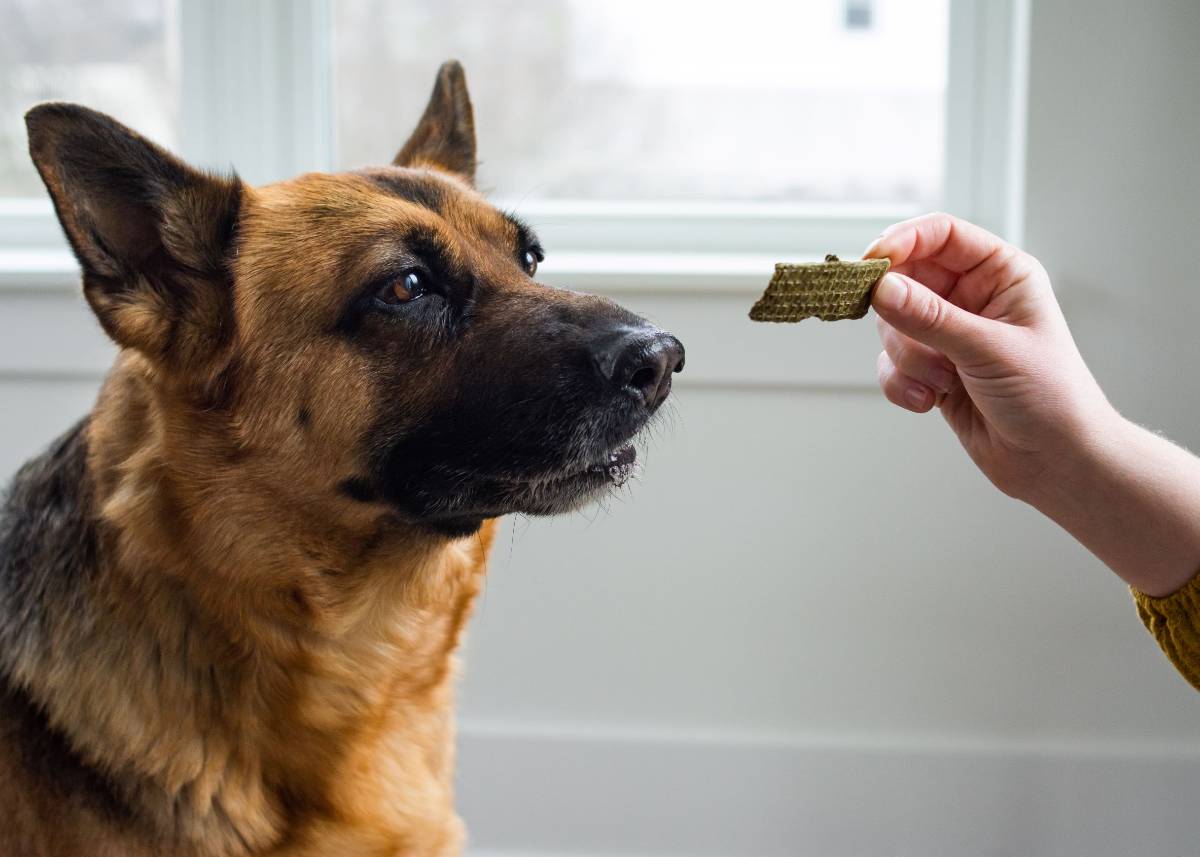
But that doesn’t mean you should skip an oral care routine (you still brush your teeth even though you eat healthy foods!).
And this is where it comes full circle. When you pair a proper diet with that easy dental care routine, you’re giving your dog the tools for long-term prevention — which should always be the goal. So build a foundation of oral health and tackle that tartar once and for all!
Share this Post

Dr. Chris Besent
Chris Bessent, DVM, MSOM, Dipl. OM, L.Ac. has over thirty years of experience in veterinary medicine including certificates in veterinary acupuncture, veterinary chiropractic and veterinary Chinese herbology. Imbued with Eastern philosophy and the knowledge that food is the foundation of health, Dr. Bessent also received her degree in veterinary nutrition and began to formulate recipes fit for a carnivore from nothing but whole foods. Currently, she divides her time between the Simple Food Project and Herbsmith, both of which are owned and operated out of her facilities in southeastern Wisconsin.

Hayley - Content Writer
Hayley is a freelance writer based in Northern California. (Writing for the Herbsmith is her favorite, but don't spread it around.) She enjoys riding horses, taking road trips, and eating grilled cheese sandwiches. Her foster dogs have mixed feelings about the spinach she keeps trying to sneak into their bowls.

Kayla - Editor
Kayla is the Content Editor for Herbsmith. She has a cat named Professor Cat-Faced Meowmers, who goes by Kitty, and a goof of a dog, named Duck. She stays busy biking trails, playing board games, and searching for the next best craft beer.
